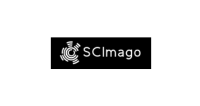LEMON GRASS ESSENTIAL OIL (CYMBOPOGUM FLEXUOSUS) IN HIGH-CONCENTRATE DIETS FOR LAMBS
DOI:
https://doi.org/10.5380/avs.v24i2.61062Palavras-chave:
additives, high grain diet, ionophores, nutrition.Resumo
The objective of this study was to evaluate the effect of the inclusion of two doses of monensin and lemon grass essential oil (Cymbopogum flexuosus) on nutrient intake and digestibility, ruminal fermentation and ingestive behavior of lambs fed a high-concentrate diet. Four ruminally cannulated ram lambs (44.7 ± 3.72 kg of BW and approximately 5 mo. old) in a 4 x 4 Latin square experimental design were used. The control diet (CONT) contained 15% of oat hay, 85% of concentrate and no additives. In the remaining diets it was included 12.5 (12.5MON) or 25.0 (25MON) mg/kg of monensin (as-fed basis) or 1 mL/kg of DM of lemon grass essential oil (EO). The treatments had no effect on the nutrient intake and digestibility. The lambs that received the EO treatment showed a higher ruminal pH in comparison to those that received the control diet. However, they did not differ from treatments with monensin. A quadratic response was observed for ruminal pH, with the highest value observed in the animals fed the diet 12.5MON. The lambs fed EO had a higher ruminal concentration of acetate than the diet with monensin. There was a quadratic response of monensin on ruminal concentration of acetate, with the lowest value observed for 12.5MON. The acetate:propionate ratio was lower in lambs fed 12.5MON compared to the control. EO decreased the ruminal concentration of butyrate; however, its concentration was higher in lambs fed monensin than EO diets. A lower concentration of total short chain fatty acids (SCFA) was observed in lambs fed 12.5MON. The alanine aminotransferase (ALT) blood concentration was higher in the lambs fed EO compared to the control. EO increased rumen concentration of blood glucose compared to the treatments containing monensin and decreased the number of eggs per gram of feces (EGF). In addition, there was a quadratic response of monensin on the EGF, with a higher value in the lambs fed 12.5MON. In conclusion, half of the daily dose of monensin was more effective at increasing ruminal pH than the full dose, with no negative reflection on nutrient intake and digestibility, as well as on the ingestive behavior and parasitic load of the animals. Thus, 12.5MON may be indicated for lambs feed high concentrate diet. EO proved to be a good natural source to replace ionophores in diets for lambs.
Downloads
Publicado
Como Citar
Edição
Seção
Licença
Autores que publicam nesta revista concordam com os seguintes termos:
- Autores mantém os direitos autorais e concedem à revista o direito de primeira publicação, com o trabalho simultaneamente licenciado sob a Creative Commons - Atribuição 4.0 Internacional que permite o compartilhamento do trabalho com reconhecimento da autoria e publicação inicial nesta revista.
- Autores têm autorização para assumir contratos adicionais separadamente, para distribuição não-exclusiva da versão do trabalho publicada nesta revista (ex.: publicar em repositório institucional ou como capítulo de livro), com reconhecimento de autoria e publicação inicial nesta revista.
- Autores têm permissão e são estimulados a publicar e distribuir seu trabalho online (ex.: em repositórios institucionais ou na sua página pessoal) a qualquer ponto antes ou durante o processo editorial, já que isso pode gerar alterações produtivas, bem como aumentar o impacto e a citação do trabalho publicado.













